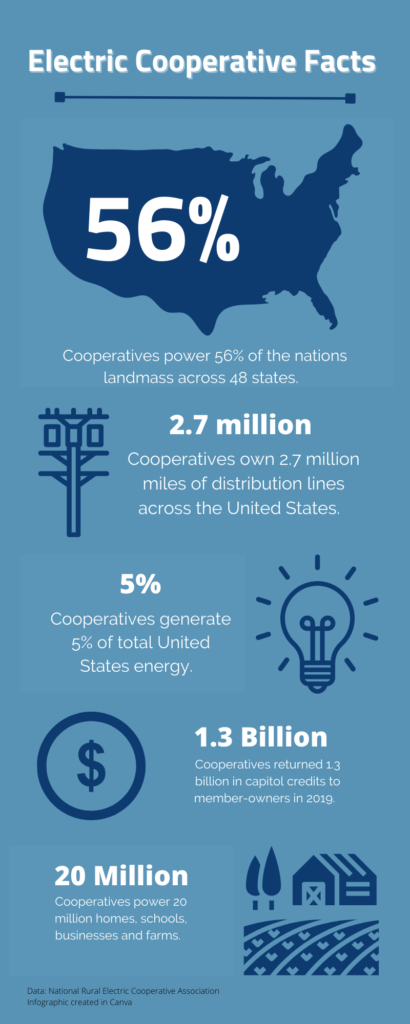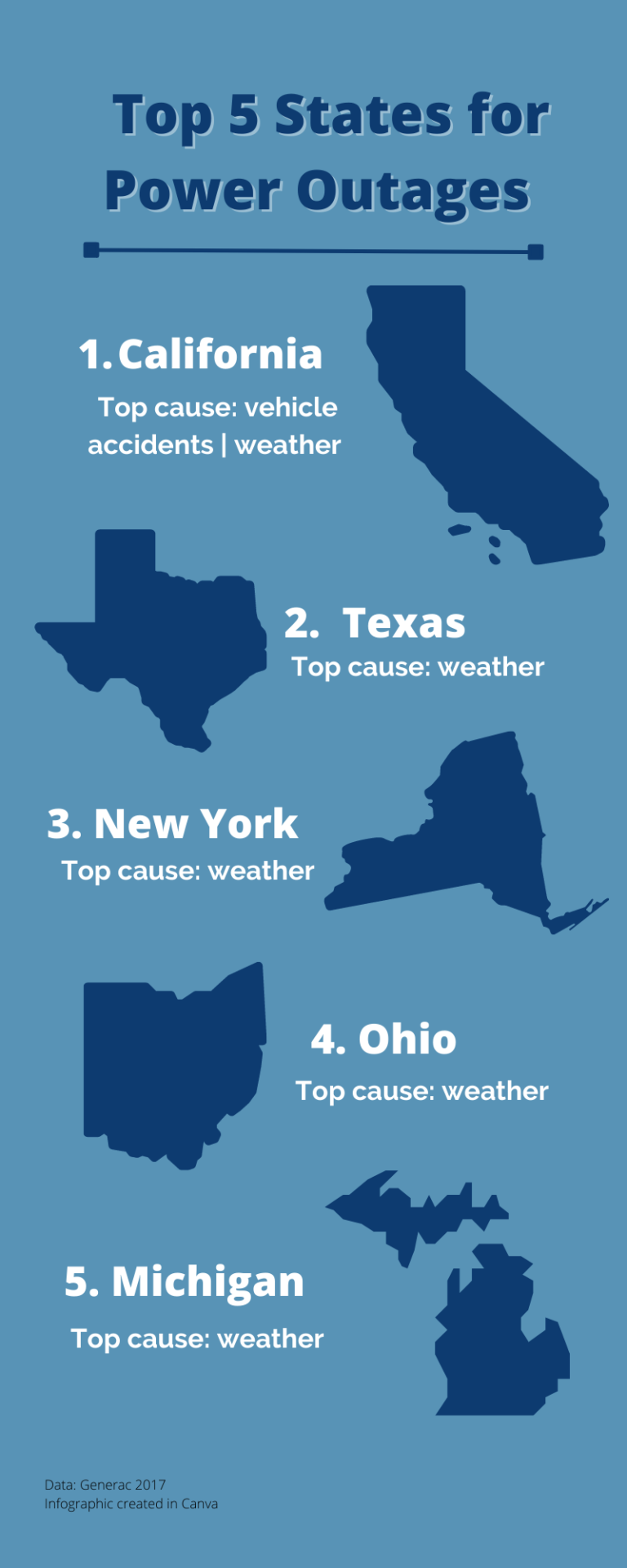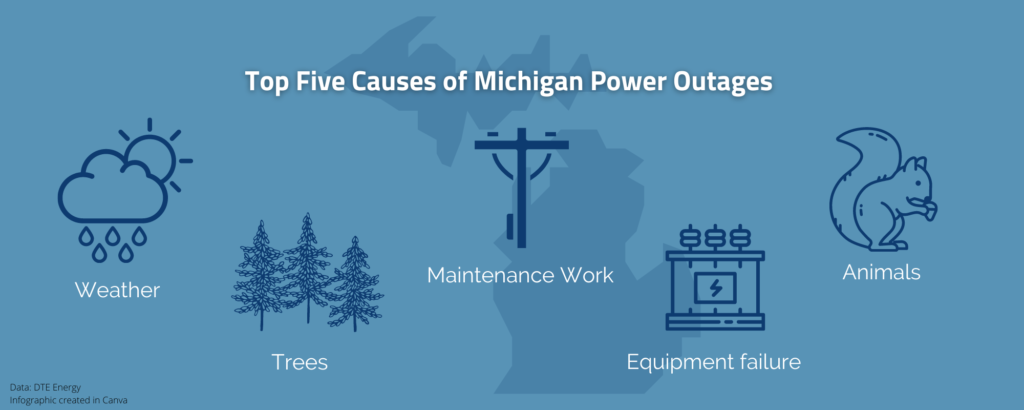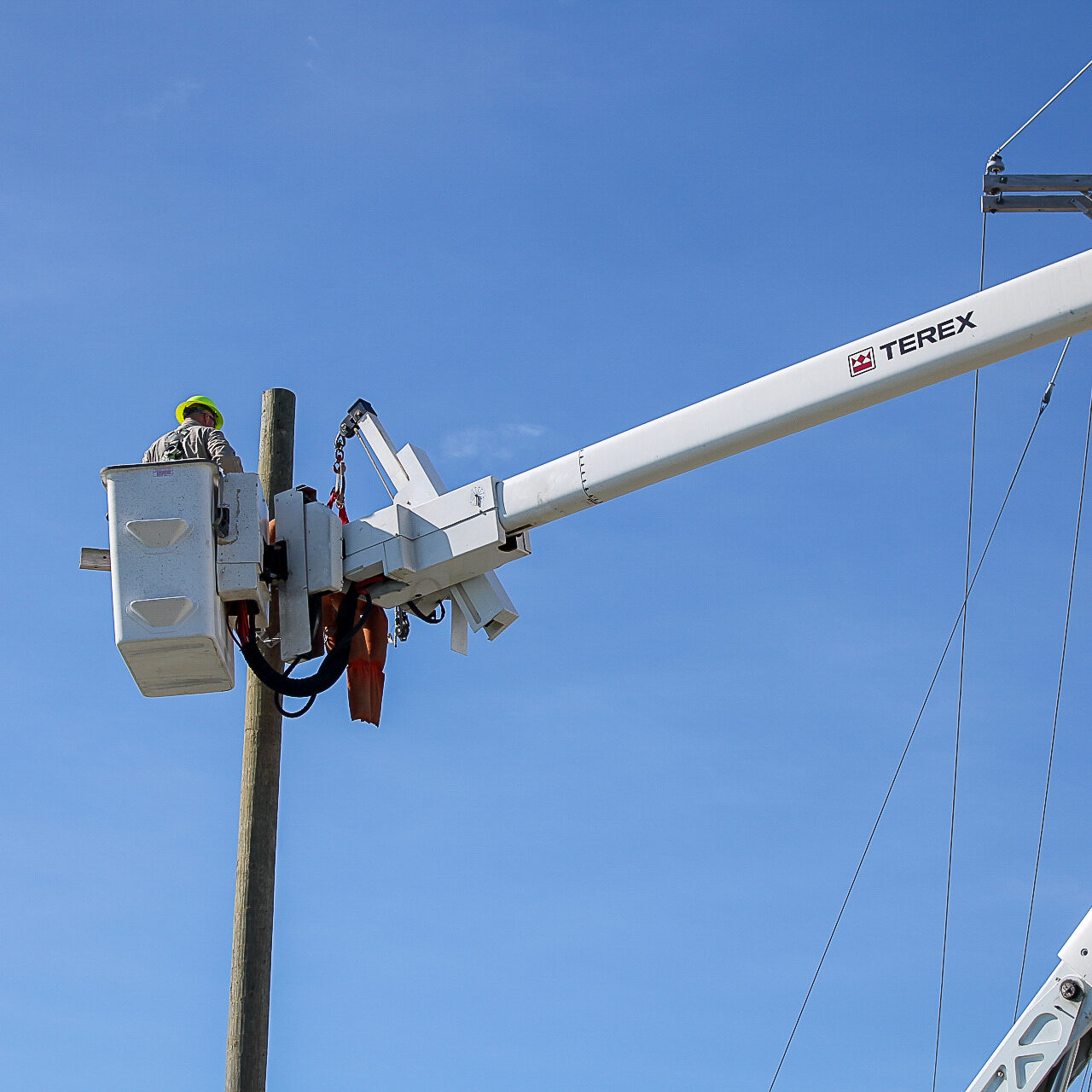SAULT STE. MARIE, MI (Dec. 12, 2021) – Communications departments at Michigan Electric Cooperatives overcome communication challenges by embracing new digital media opportunities.
Michigan co-op communicators are facing new renewable energy requirements, combined with electric vehicle adoption and rising inflation costs. Overcoming challenges with digital media is a successful strategy for cooperatives across the state. As members spend their time online, cooperatives should meet them on the same mediums. Analyzing the challenges, understanding the opportunities and staying informed on emerging trends ensures co-op communicators across Michigan meet member’s communications needs.
Michigan’s electric utility industry consists of eight privately owned utilities, nine electric cooperatives and one privately owned steam utility. All privately owned utilities are regulated by the Michigan Public Service Commission (MPSC). The purpose of the MPSC is explained in an interview with MPSC Commissioner Katherine Peretick.
“Our mission is to ensure electricity in Michigan stays safe, reliable and affordable at reasonable rates,” Peretick states.
Peretick explains that the MPSC doesn’t regulate Michigan’s nine electric cooperatives, since cooperative regulation occurs through their member-owners. MPSC interaction with electric cooperatives consists of code of conduct, electric choice rates, service territory designation, service quality and standards. All nine Michigan electric cooperatives are member-owned and operated. Cooperative management is governed by a board of directors, who are voted by and from the cooperative membership.
Cooperative communications departments are essential in ensuring members, board members and management stay informed. As a member-owned utility, communications have a unique opportunity to tell the stories of their membership, including key accounts, businesses and household consumers. Communications departments in Michigan range from one communicator to a full team.

Challenges facing communications departments range from new renewable energy requirements and electric vehicle implementation to small, one-person communication teams.
“One of the largest challenges facing Michigan’s utility industry is climate change,” Peretick states. “The MPSC has reviewed potential for reliability upgrades with Michigan utilities in order to adapt to climate change.”
New renewable energy requirements in Michigan are becoming a challenge for electric cooperative communicators. As Michigan moves from a 10 percent renewable energy requirement to a 15 percent renewable requirement, many cooperatives and investor-owned utilities are working to accomplish this goal. Generating new renewable energy is a costly process that must overcome established Michigan regulations on new energy generation.
In 2021, Governor Whitmer introduced The Michigan Council on Future Mobility and Electrification (CMFE) encouraging changes in state policy in regard to future mobility and electrification. The CMFE is largely tasked with finding innovative solutions to encouraging Michigan to become a national leader in the race for electric vehicle adaption by 2030. Electric vehicles are now expanding to even Michigan’s most rural areas, including the Upper Peninsula.
Prices are rising across the country and the cost of electricity is not excluded. Michigan electric cooperatives are facing increasing costs for electrical supply, maintenance projects, parts and labor. With those increased costs comes the unwelcome but imminent electrical rate increase for cooperative members.

The financial mindset of member-ownership encourages cooperative management to stay financially independent, often encouraging reduction in costs where appropriate. As a result, cooperative employees may perform a variety of tasks outside of their immediate job role. This budget focused culture ensures cooperative members are always top of mind. Communications departments are often tasked with creating many different styles of communication with a small department.
As renewable energy requirements change, electric vehicle use expands, inflation rises, and power outages occur – cooperative communicators remain steadfast in their resolve to communicate complex issues well to their membership. Using a combination of mediums and a solid crisis communications plan are a successful combination for cooperative communicators across Michigan.

Cooperative communications departments are responsible for internal and external communications ranging from daily communications to long-term projects. Social media is a focus of electric cooperatives as it allows cooperatives to meet members on their level. As social media expands, cooperatives are finding new ways to meet the communications needs of their membership.
Thumb Electric Cooperative’s Communications Specialist, Mitch Hirn describes a strength of social media is how quickly communications can be relayed to members. Referring to a recent example, Hirn explains a scam caller was targeting their membership and he was able to quickly post a graphic on social media warning members not to fall for the scam.
“It takes me minutes to reach members through social media,” Hirn states. “In the past, members only received most information by mail, which can take days.”
Cherryland Electric Cooperative has captured the principle of member-ownership. Everything from the cooperative’s annual member meeting to social media communications revolves around their members. One of the best uses of Cherryland Electric’s social media is memes. The cooperative mixes memes into social media communications to relay information on annual meetings, contests and even power outage situations.
“We want to be relatable to our membership,” Courtney Doyle, Cherryland’s Communications and Marketing Specialist states. “We are the people behind members at school pickup and in the grocery store line – we want our members to know that Cherryland employees are regular people. Memes help communicate that fact.”
Combining both social media and printed media is a winning combination for cooperatives to meet communications needs for members of all ages. Eight of nine Michigan electric cooperatives reach members with a print and online magazine, Michigan Country Lines. Michigan Electric Cooperative Association Communications Director, Casey Clark describes the magazine as a success for cooperatives across the state.
“Using a mixture of mediums is important to reach all members,” Clark states. “The digital space is crowded, so there’s room for members to consume printed material. Members who prefer digital news have access to Country Lines on our website and social media channels.”
Country Lines reaches 270,000 cooperative members across the state through ten issues each month. The magazine includes regional stories, recipes, and a photo contest. Cloverland Electric Cooperative produces its own magazine, Cloverland Connections, reaching 34,000 members across its Eastern Upper Peninsula of Michigan service territory.
As the digital age continues, cooperatives are expanding communications to new mediums. Cooperatives are adapting to emerging trends including videos to highlight co-op news, stories, safety tips and even power outage events.
Midwest Energy Electric Cooperative uses short videos to share safety tips and cooperative news with members. Digital media specialist, Nicole Barfell explains that videos may help explain complex issues to cooperative members in just one to two minutes.
“I make all our videos in-house using apps,” Barfell states. “We now have a video production calendar and post one video on social media each week.”
YouTube, TikTok and Instagram Reels are converting cooperative communications departments to their social channels. Cherryland Electric has started to do live video updates from line worker job sites during power outage events.
“When a member can see destruction from a storm and linemen working on a live video, they have more patience on power restoration times,” Doyle states.
Another industry trend is cooperative specific podcasts. Co-op Energy Talk with Cherryland Electric Cooperative is the first electric cooperative specific podcast in the nation. Podcast episodes range in topics from power supply adjustments to general business to meeting Cherryland’s board of directors.
“We were able to use the podcast to talk directly to members about recent power supply cost recovery changes,” Doyle states. “There has been a lot of positive feedback surrounding Co-op Energy Talk.”
An additional benefit to Cherryland Electric Cooperative’s podcast is the ability to explain complex issues directly to members. Topics such as power supply, power grid and new renewable energy requirements are complicated to explain through a press release or social media post. Direct communication from the CEO to the member has been the pathway to Cherryland’s podcast success.
Michigan weather is known for unpredictability and lake effect storms. Storms cause multiple day extendedoutages from the urban city areas all the way to the Upper Peninsula. Power outage communications may become stagnant after years of following the same outage communication procedures. How do Michigan electric cooperative communicators adapt to reach members through power outage reporting?
Molly McPherson, M.S., APR, is a public relations expert who spends much of her time coaching electric cooperative leadership teams and communicators on crisis communications. In an interview, McPherson describes one of the best ways to conquer a crisis is by listening to members concerns in advance.
“Electric co-op members realize they have a voice and a platform to be heard on social media,” McPherson states. “Strong co-op leadership teams will listen to these concerns and provide solutions through communications.”
McPherson advocates that when co-op communicators have a seat at the leadership table, they turn problems into solutions through effective communications plans. As cooperative communicator’s plan for the future, McPherson encourages them to advocate for a seat at the leadership table, budget increases and communications tools needed to meet members needs on social and digital media.
As Michigan cooperative communicators face the future, a solid foundation remains in the network between cooperatives at the state and national level. Communicators find assistance and inspiration through the resources available from the Michigan Electric Cooperative Association and the National Rural Electric Cooperative Association.
Michigan cooperatives are embracing technology to overcome workload challenges. Cloverland Electric provides a great tip for staying creative through social media scheduling. Sprout Social lets the team coordinate social planning, reply to comments across all channels in one inbox and report on social media through the platforms built-in analytics.
NRECA’s Senior Communications Resource Manager, Abby Berry explains the Michigan cooperative communicators also appreciate the “admire and acquire” philosophy that all cooperatives share. When creativity is running low, communicators can reach out to others through the NRECA professional communities and MECA networks.
“There are always innovative ideas from cooperative communicators around the nation in NRECA’s professional communities’ network,” Berry states. “Once an idea is shared, it’s amazing to see how cooperatives across the nation adapt it to meet member’s needs.”
A unique trend among cooperative communicators is their willingness to share ideas with others In fact, this trend has led to informative brainstorming sessions with communicators across Michigan through MECAinitiated discussions, and across the nation through the NRECA.
“Don’t be afraid to reach out to a co-op communicator who is successful on social media and ask to borrow their blueprint,” states Clark. “Communicators are always willing to share great content in the cooperative world.”
Communicators preparing both printed and digital content will find success in re-purposing one piece of content to fit across all mediums.
“It’s important to remember the value of re-purposing content across various channels,” Berry states. “You may need to adjust content to work on social media and in print, but re-purposing allows communicators to save time while ensuring members receive the same message across multiple platforms.”
Berry suggests using resources available through the NRECA, Safe Electricity, Touchstone Energy, FEMA,and the Electrical Safety Foundation. Available resources can be re-purposed to meet communication needs at any cooperative.
Electric cooperative communicators are creative, innovative, and always looking for new ways to communicate to members. As communicators embrace change across the industry, success can be found in a diverse range of communication mediums. Print media is essential for some members, while others can be reached through social media and text messages. Regardless of channel, communicators should provide consistent messages across each platform.
Whether it’s starting a podcast or scheduling on social media – your cooperative communications will find success by sticking to a clear communications plan. If there’s one thing Michigan cooperative communicators fundamentally know, it is that the unexpected may always occur. Create a crisis communications plan, ensure all communicators at your cooperative understand the plan and put into action as needed.
When industry changes occur, focus on the potential and opportunities surrounding cooperative communications. Discovering new technology, media tools and engaging with national connections will assist in conquering any communications challenge. Learning from past communications and embracing changes to come will keep Michigan’s electric cooperative future bright.
Visit abbybell.org to stay up to date on latest news and information. Follow me on Facebook, LinkedIn, Twitter and YouTube.

No responses yet